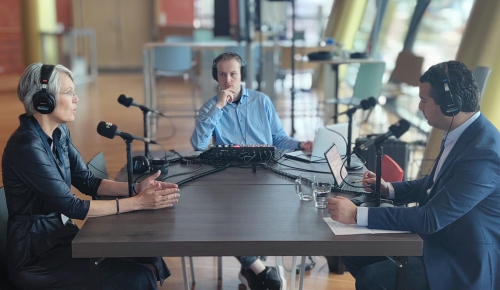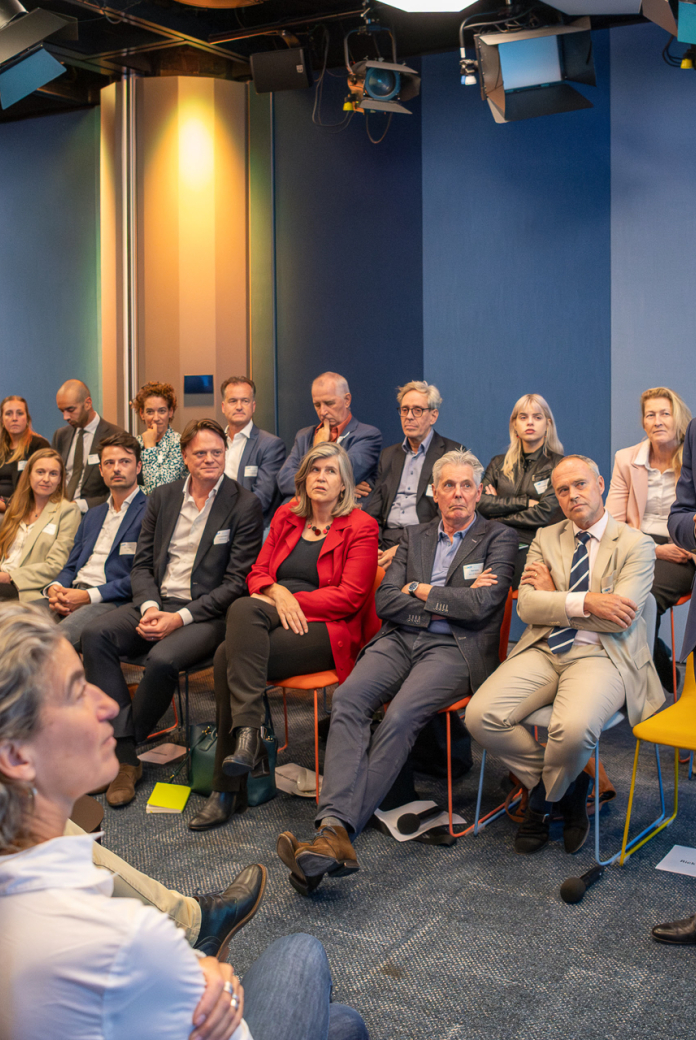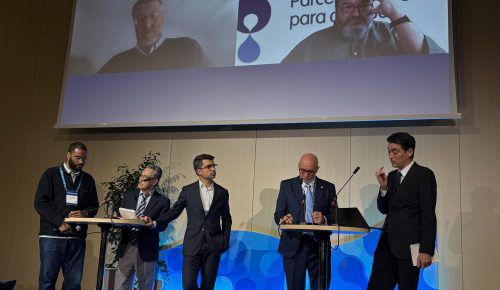
A new investment facility backed by the Dutch Government, Climate Investor Two (CI2), is already agreeing its first projects. Dutch organisations are being encouraged to look to it for water and climate schemes in developing countries. We hear from Andrew Johnstone, CEO of Climate Fund Managers that manages CI2. Climate Fund Managers is a member of the Netherlands Water Partnership (NWP).
“The contribution potential is significant,” comments Andrew Johnstone, CEO of Climate Fund Managers (CFM), on the opportunity for Dutch water sector companies to participate in projects receiving investment from the Climate Investor Two (CI2) facility.
CI2 is a new fund that focuses on water and supports investments in all aspects of the water cycle. CFM’s water focus with CI2 will cover municipal and industrial water and waste water supply, desalination, bulk water supply, waste and waste water to energy, and riverine and coastal ecosystem management and protection. “Across the wide range of what the fund is seeking to do, there are many aspects of it that have strong linkages to the constituents of NWP,” adds Johnstone.
On top of this, Johnstone sees that governments and potential sponsors across Africa, Asia and Latin America associate the fund with the Netherlands in general, and with the Dutch Government as the source of the capital. “I think the opportunity is large, just from that straightforward association,” says Johnstone.
Blending to invest one billion dollars
CI2 is replicating the proven fund structure of the Climate Investor One (CI1) facility. This focused on renewable energy and used blended financing to draw in other sources of investment. At its final financial close in June of last year, CI1 had secured a total of USD 850 million.
“That showed the power of using blended finance as a mobiliser of capital,” says Johnstone. It also demonstrated the speed with which it was possible to deliver projects in locations where this type of funding had not been used before, with Johnstone mentioning as an example the first wind farm in Djibouti.
CI2 has already secured EUR 75 million of funding from the Dutch Fund for Climate and Development (DFCD). As with CI1, it will use this public capital to attract large volumes of commercial financing for the construction phase through its fund architecture. “We are aiming to take the EUR 75 million and turn it into a billion dollars through co-investment by other institutions and private sector investors,” says Johnstone.
A focus for project development
The CI2 fund managed by CFM is part of a wider pioneering initiative. In May 2019, the Dutch Government awarded the contract to manage the EUR 160 million DFCD contribution to a consortium led by the Dutch development bank FMO and that included Netherlands Development Organisation (SNV), World Wide Fund for Nature (WWF-NL) and CFM.
According to CFM, the pioneering partnership of financial institutions and NGOs aims to help developing countries build climate-resilient economies.
Johnstone explains that CFM can contribute to project development, including access to early stage funding. “We can bring technical, financial, legal, environmental and technology assistance,” he adds. Equally, CFM can support the implementation of full projects, such as where a project company is to be created with shareholders.
CFM is open to being contacted by potential project partners. “The primary aim of CI2 is to develop and build projects,” says Johnstone. “Ideally, the partnership should be created early on in the process to create the benefits of speed of implementation.”
The fund’s blended finance approach addresses impediments in project finance. One is a lack of early stage capital. “There is not a lot of it around,” says Johnstone. Another is that the markets in question tend to present a higher level of risk for investors, which tends to increase the rate of return investors seek. At the same time, affordability is more likely to be an issue in these locations, which suggests a need for a lower rate of return. The blended approach uses the public capital to balance the risk against the affordability of projects.
This final aspect is key. Johnstone notes the huge funding gap around meeting the Sustainable Development Goals. He says there is a climate-related gap of some USD 1.5 trillion a year. “Finding a financing solution is absolutely necessary to fill that gap,” he says, adding that “blended financing is the tool that is going to do that.”
He says that climate-related blended financing is relatively new. “It is still in its infancy,” he says, “but we hope the demonstration effect of CI2 is replicated, emulated and scaled up by other practitioners doing this type of thing.”
Ready to deliver
According to Johnstone, one investment under CI2 is already approved, and further opportunities are being looked into across project types and locations.
“We are terribly excited about both the mandate as well as the impact potential of it,” says Johnstone. “We are also very excited about the fact that we can actually use this capital to advance Dutch industry in markets in which we work.”
Johnstone says he anticipates five projects moving into development in the coming months, and for EUR 15-20 million of the EUR 75 million to be committed by the end of the year.
“We are in business. We have got the funds, the cheque book is open, and we are actively looking for and sourcing opportunities,” says Johnstone. “Now is a good time to talk to us.”
For more information on the CI2, please visit this web page and/or contact our member CFM via info@climatefundmanagers.com.
For additional information on the work that NWP does on the theme ‘Finance for Water’ please visit this web page and/or connect with Lisanne Evenhuis, NWP Project Officer at l.evenhuis@nwp.nl.
Featured NWP members: Climate Fund Managers







